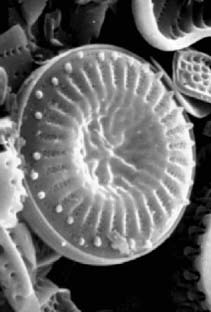The secret sex life of diatoms
Diatoms are a huge group of algae, currently believed to number some 200 000 species. They serve as useful indicators for ecological monitoring and paleoclimatic studies. The former Soviet Union contains important aquatic sites for diatom studies. A unique set of diatom species in Lake Baikal is of particular interest. Lake Baikal contains a fifth of the world's fresh surface water producing a significant impact on the global cycling of nutrients. Studies of reproductive biology, molecular systematics and morphology are being carried out on selected freshwater and marine diatoms, including the genus Aulacoseira that is restricted to Lake Baikal. It now seems that Aulacoseira evolved locally from more widely distributed ancestors. Some freshwater diatoms like Sellaphora have been shown to have male and female organisms. Consequently leading to reproductive isolation between similar ‘races' of Sellaphora pupula. In the light of new information concepts of diatom species must be reviewed as their total number is probably far greater than previously thought. The proposed numbers of endemic species will have considerable implications for biodiversity monitoring programmes.



